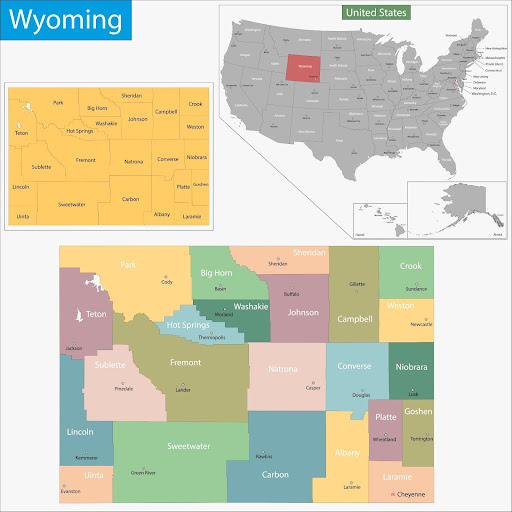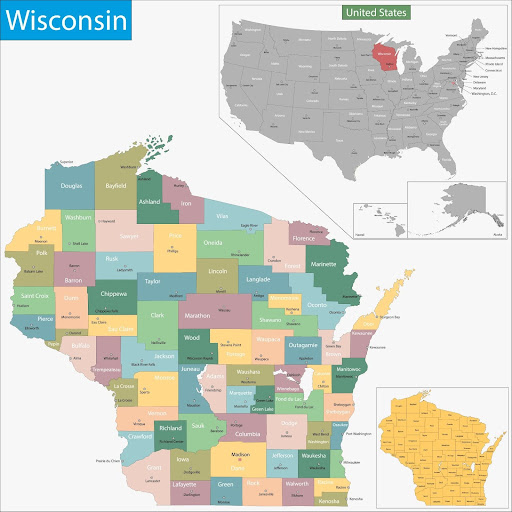Table of Contents
From wind-driven infernos in the Willamette Valley to slow-creeping timber fires in the Cascades, no two incidents play out the same. For fire investigators, the terrain is only half the challenge. The real test lies in navigating a dense web of agencies, jurisdictions, and land ownership boundaries that can shift from mile to mile.
This guide on wildland fire resources in Oregon breaks down what you need to know to operate effectively in the state. Use it to get your bearings, sharpen your protocol, and stay ready for whatever this fire season brings.
For guidance and links, check our wildland firefighting resources.
Live Incident Updates & Maps
Stay updated on active wildfires, containment levels, and response actions through this Oregon-specific tool:
State Overview
Oregon is a wildfire crucible shaped by topographic extremes and ecological tension. On the west, temperate rainforests in the Coast Range and Willamette Valley rarely burn, until they do, with high intensity and structural loss. East of the Cascades, dry grasslands and ponderosa pine make frequent fire a seasonal norm.
- Western Oregon: Typically wetter but increasingly vulnerable due to drought and wind-driven fire events.
- Cascade Range: Steep terrain, complex fuel beds, and delayed access for suppression crews.
- Eastern Oregon: Fast-spreading rangeland fires, often human-caused or lightning-ignited, dominate incident numbers.
- WUI Growth: Oregon’s expanding wildland-urban interface, especially around Bend, Medford, and Eugene, has complicated suppression and investigation, with overlapping jurisdiction.
Wildfire Season Timeline
Oregon’s fire calendar is no longer a fixed window. It’s dynamic, shifting earlier and lasting longer each year.
- Spring (April–June): Prescribed burns dominate early season. Flash fuels in eastern Oregon begin drying out, leading to fast-spreading grass fires.
- Summer (July–September): Peak season. Lightning ignitions in national forests. Human-caused incidents around WUI zones and recreational areas spike.
- Fall (October–November): East winds and dry conditions (especially in western valleys) create extreme fire behavior. This is when fast-moving, destructive fires like 2020’s Almeda Fire occur.
Key State Agencies Involved
- Oregon Department of Forestry (ODF): ODF leads wildfire suppression on 16 million acres of private, state, and some federal lands under contract. Their Fire Protection Division coordinates aviation assets, interagency teams, and investigation protocols. Fire investigators frequently collaborate with ODF district offices and detection staff.
- Oregon State Fire Marshal (OSFM): OSFM’s Community Risk Reduction unit plays a growing role in prevention, while mobilization efforts are coordinated under the Oregon Fire Mutual Aid System (OFMAS). They’re also expanding fire investigation capabilities through partnerships with local departments.
- Oregon Office of Emergency Management (OEM): Handles resource coordination during large incidents, especially those impacting communities. OEM supports public alert systems and mutual aid logistics.
- USFS & BLM: Federal agencies manage massive acreages across the state, including national forests like Deschutes, Umpqua, and Wallowa-Whitman. Investigators must comply with NWCG protocols and coordinate closely with federal law enforcement.
- Tribal Fire Programs: Tribes like the Confederated Tribes of Warm Springs and the Klamath Tribes maintain independent fire crews and conduct regular prescribed burning. Investigations on tribal lands require coordination through the Bureau of Indian Affairs (BIA) or tribal fire leadership.
Local Wildland Firefighting Resources
In Oregon, initial attacks are often handled by small departments and local units, especially those east of the Cascades, where VFDs and rangeland protection associations fill the gaps.
Expect varying levels of wildland certification and resource access depending on the county or fire protection district. Investigators benefit from these locals’ terrain knowledge and fast access to remote ignitions.
List of Local/State/Federal Fire Response Agencies
- ODF District Offices: Statewide districts under ODF are your first point of contact for fires on private lands. Each has designated Fire Investigation staff and dispatch links.
- County Sheriff’s Offices: Often lead initial ignition interviews in unprotected areas or when arson is suspected. In high-profile cases, they coordinate with OSFM and OSP.
- Rangeland Fire Protection Associations (RFPAs): Especially relevant in southeastern Oregon. These community-led groups respond to fires outside traditional fire districts. Investigators may rely on their perimeter and suppression intel.
- Volunteer Fire Departments (VFDs): Hundreds of rural VFDs respond to wildfires across Oregon. Some have red-carded personnel and wildland units; others partner with ODF for training and support.
- BLM & USFS Regional Fire Offices: Cover federal lands across eastern, central, and southern Oregon. Investigation protocols follow NWCG guidelines, and joint federal-state tasking is common for cause determination.
Contact Numbers and Emergency Links
- To Report a Wildfire: Dial 911
- ODF Incident Reporting & Dispatch: https://odfcentral.oregon.gov/fire
- Northwest Coordination Center (NWCC): (503) 808-2775 | https://gacc.nifc.gov/nwcc
- Oregon Wildfire Risk Explorer: https://tools.oregonexplorer.info
Training & Volunteering
If you’re interested in wildland fire management, Oregon offers various training programs and volunteer opportunities.
NWCG-Approved Academies and Centers
Volunteer and Seasonal Training Opportunities
- ODF Seasonal Firefighter Recruitment: Every spring, ODF recruits and trains hundreds of seasonal firefighters. Many participate in suppression mop-up where investigators operate.
- Fire Corps & CERT Programs: Volunteers assist with logistical support, prevention outreach, and rehab operations. Some programs also shadow agency investigators during low-risk fires.
- RFPAs & VFD Partnerships: Community volunteers receive basic wildland training and may assist with initial size-ups or early suppression phases in under-resourced areas.
Stay Informed on Oregon’s Wildland Fire Landscape
Oregon’s fire behavior is shifting, with faster ignition, hotter burns, and longer seasons. For investigators, this means evolving tactics and deeper interagency coordination.
Stay current on dispatch protocols, understand how fuels differ between wet and dry zones, and know which district or agency holds the investigation lead. From west slope lightning strikes to sagebrush arsons in the high desert, every ignition tells a different story. Your job is to read that story clearly, no matter the terrain.
FAQs
Who investigates wildfires in Oregon?
It depends on land ownership. ODF leads investigations on state-protected lands. USFS/BLM investigates federal fires. Local sheriffs and OSFM may join for criminal elements or multi-jurisdictional cases.
Can I conduct a prescribed burn in Oregon?
Yes, but with permits. Contact ODF or your local fire department. Burn bans may override approvals during peak fire conditions.
Where can I get wildland fire investigation training?
Start with Mid-Columbia or SOWTA academies. ODF and OSFM also offer workshops and NWCG-certified coursework.










